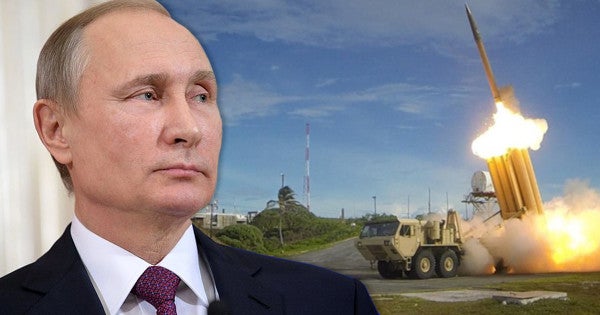Russia Claims Its New ICBM Can Evade US Defenses. Don’t Worry, We Couldn’t Stop The Old Ones Either
Russian President Vladimir Putin unveiled on Thursday a new nuclear-tipped intercontinental ballistic missile he said would render defense systems “useless,”...

Russian President Vladimir Putin unveiled on Thursday a new nuclear-tipped intercontinental ballistic missile he said would render defense systems “useless,” but surprise, assholes: Our current missile defenses probably couldn’t stop your old ones, either.
The new ICBM has a longer range and “can reach almost any target in the world,” according to NBC News. And ol’ Vlad, with some bravado, boasted, “missile defenses will be useless against it.”
Now is about the time I think of President Ronald Reagan’s push for a strategic defense initiative — often referred to as “Star Wars” — which was billed as a potential shield against Soviet nukes. It was basically Reagan holding zero cards while claiming he had a full house, and the Soviets kept spending money trying to counter it until they went bankrupt.
Which brings us to today, as we look at Russia’s super secret amazingly-awesome new nuke. Moscow, with a defense budget barely more than 10% of the Pentagon’s, is spending its taxpayer money on something that doesn’t need to be developed and that most likely will never be used.
And what's more, U.S. missile defense — if you can even call it that — is a joke. They are, in the words of the Union of Concerned Scientists, “hugely expensive, ineffective, and offer no proven capability to protect the United States.”
Just look at the track record. The Missile Defense Advocacy Alliance keeps a running tally on its website, which shows a success rate for various missile defense types that are all over the place. The Aegis Ballistic Missile system has an 84% success rate, while the Ground-Based Midcourse Defense system boasts a success rate of 56%.
Boy, that makes me feel all warm and fuzzy inside.
Still, the U.S. does have one better option, which it has already deployed to the Korean peninsula: THAAD, or Terminal High Altitude Area Defense. The new-ish interceptor has a powerful radar and a 100% success rate, but, and this is a big but, it has never been tested against a salvo of multiple missiles at once.
“The use of multiple shots, timed ever-more-closely together, appears destined to rehearse saturating a defensive system by presenting it with an overwhelmingly complex radar picture,” Joshua Pollack, editor of the U.S.-based Nonproliferation Review, told Reuters.
So yeah, good job, Vlad. You made a missile that can defeat the missile defense that's already been defeated.

WATCH NEXT:
